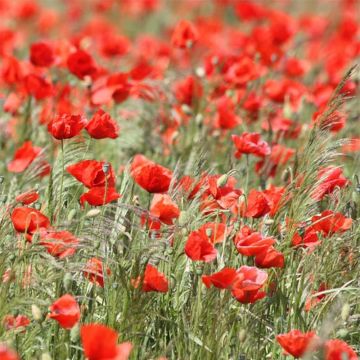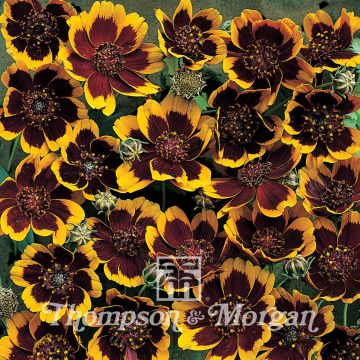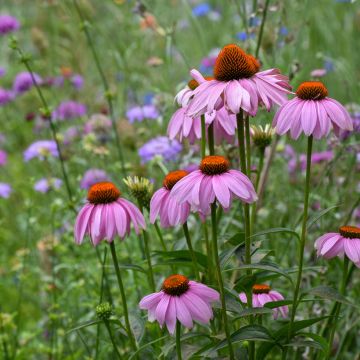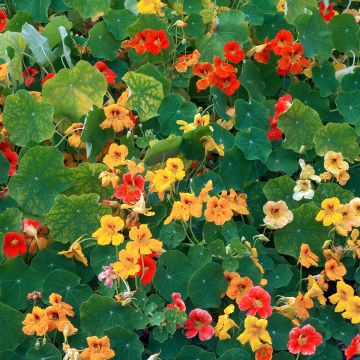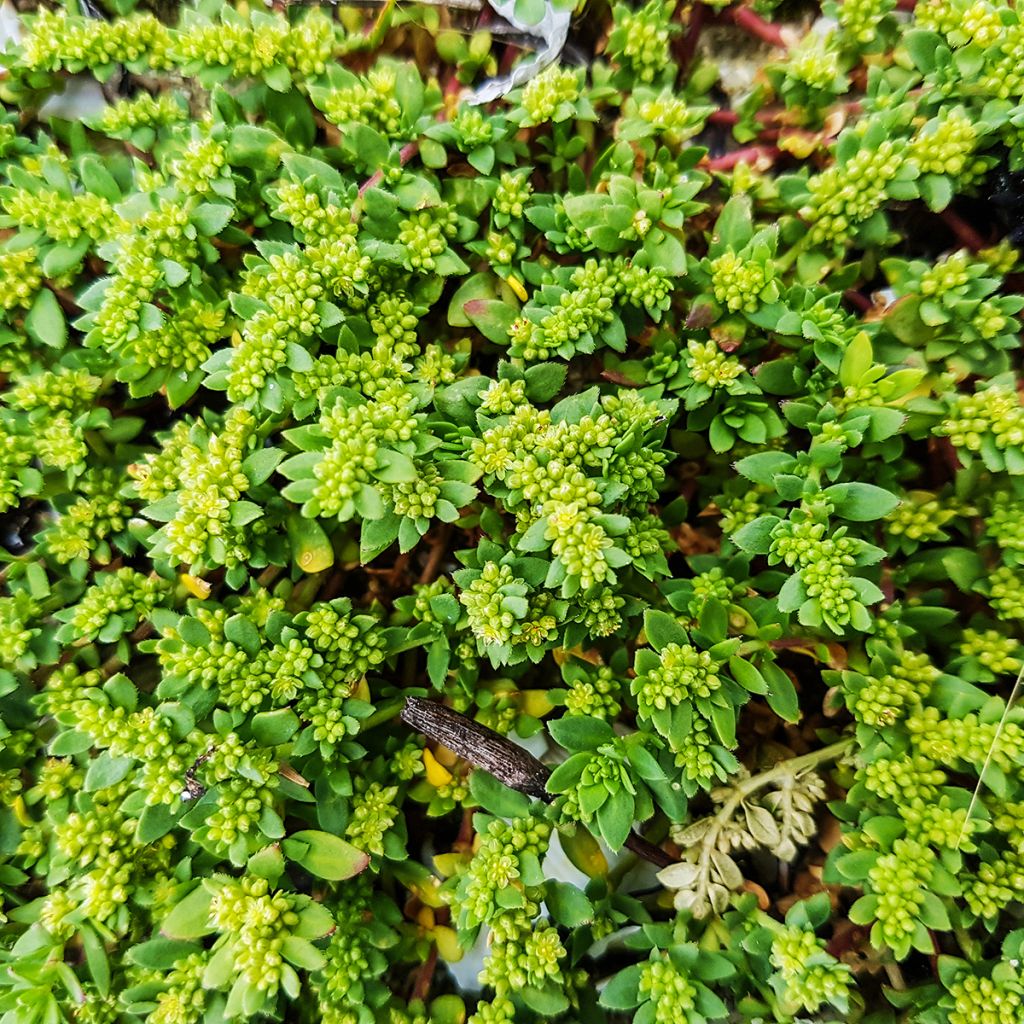

Herniari glabra - seeds
Herniari glabra - seeds
Herniari glabra
Smooth Rupturewort, burstwort
This item cannot be shipped to the selected country
Dispatch by letter from €3.90
More information
Schedule delivery date,
and select date in basket
This plant carries a 6 months recovery warranty
More information
We guarantee the quality of our plants for a full growing cycle, and will replace at our expense any plant that fails to recover under normal climatic and planting conditions.
Seed-only orders are dispatched by sealed envelope. The delivery charge for seed-only orders is €3.90.
Does this plant fit my garden?
Set up your Plantfit profile →
Description
Hernaria glabra, also known as Turquette, stands out as a small, spreading perennial evergreen plant, specially adapted to difficult conditions and arid soils. It is one of the easiest hernarias to identify, being completely smooth. Renowned for its long-standing medicinal virtues, this plant is characterised by its simplicity rather than spectacular features. It forms a dense cushion, with prostrate stems carrying small green leaves and produces small clusters of tiny green flowers in summer. Transforming the landscape into a verdant carpet during summer, Hernaria takes on coppery hues in autumn. Incredibly robust and comfortable among stones, it thrives in shallow, rocky, poor, and dry soils.
Hernaria glabra (in Latin), commonly known as turquette, smooth herniary, millegraine, stonebreaker, or herniole, is a perennial plant of the caryophyllaceae family, native to almost all of Europe, western and boreal Asia, as well as North Africa. It develops from a branching crown, producing prostrate, slender stems 20 to 35 cm long. Its ovate or lanceolate, bright light green leaves are smooth, opposite, with the upper leaves arranged alternately, measuring 3 to 8 mm and without a petiole. Gradually, the turquette forms a low-growing cushion with a height of 3 to 5 cm, sometimes reaching a diameter of 50 to 70 cm. The stipules are membranous and measure about 1 mm. Insignificant flowering occurs from May to July depending on climatic conditions. The flowers, without peduncles, form clusters along the small branches. The 5 petals are often reduced or absent and the sepals are greenish and approximately 0.5 mm. This colour matching the foliage gives the plant a curly appearance. The fruit, which contains a single seed, is indehiscent, meaning it does not naturally open at maturity to release it.
Hernaria glabra proves to be a robust and versatile solution for covering difficult terrains. It is adapted to dry rockeries and can also be used as ground cover instead of grass as it is resistant to the most demanding conditions such as trampling and drought. This low-growing, easy to maintain plant, prefers a sunny exposure and poor soil, quickly forming a persistent green carpet that takes on coppery hues in autumn. A valuable asset for gardens with shallow soils, it pairs perfectly with plants that thrive in spartan conditions, such as: Frankenia laevis (Sea heath) with its reddish-purple flowering, Matricaria tchihatchewii (Dwarf chamomile) covered in small daisies from May to July, Teucrium ackermanii with its silver-grey foliage covered in pink-purple flowers, Thymus praecox Minor or Thymus longicaulis with highly fragrant foliage.
This plant adapts to various situations, from green roofs to gaps in stone walls, offering an ideal solution for gardens with limited soil. It can be harmoniously paired with dwarf asters with colourful flowers, grasses like Ophiopogon planiscapus Nigrescens with black foliage, Carex oshimensis Evergold with yellow and cream variegated foliage, or small shrubs like Helichrysum italicum (Curry plant) with a strong fragrance or Convolvulus cneorum with silver foliage. In summary, Hernaria glabra is a resilient plant that enhances and adapts to various conditions, adding a natural and charming touch to your garden.
Hernaria glabra, formerly used for medicinal purposes, is recognised for its diuretic properties. Its common name "casse-pierre" (stonebreaker) originates from its traditional use in treating gallstones. In addition to its diuretic virtues, this plant is also considered to promote the healing of wounds and injuries, as well as emollient, soothing the body's tissues.
Report an error about the product description
Flowering
Foliage
Plant habit
Botanical data
Herniari
glabra
Caryophyllaceae
Smooth Rupturewort, burstwort
Western Europe
Other Flower seeds
Planting and care
The seeds of Herniaria glabra are best sown from March to May, but also in September-October, if the climatic conditions are favourable (sufficiently high temperatures, not too much humidity). Broadcast sow directly in open ground.
To ensure an even distribution of the seeds, you can mix them with fine sand before sowing. After lightly raking the soil, different sowing methods can be used depending on the area to be sown: sow by hand, with a spreader, or by throwing in large forward movements like a sower. Lightly firm the soil, then water moderately and keep it moist until germination. Regularly remove any weeds that appear. The seeds germinate in 1 to 2 weeks under warm conditions.
Herniaria thrives in light, shallow, and well-drained soil, preferably neutral to slightly acidic and of moderate fertility. It thrives in rocky environments, uncultivated land, gravelly or rocky terrain. Very hardy and drought-tolerant, it is a lover of intense sunlight.
Sowing period
Intended location
This item has not been reviewed yet - be the first to leave a review about it.
Haven't found what you were looking for?
Hardiness is the lowest winter temperature a plant can endure without suffering serious damage or even dying. However, hardiness is affected by location (a sheltered area, such as a patio), protection (winter cover) and soil type (hardiness is improved by well-drained soil).

Photo Sharing Terms & Conditions
In order to encourage gardeners to interact and share their experiences, Promesse de fleurs offers various media enabling content to be uploaded onto its Site - in particular via the ‘Photo sharing’ module.
The User agrees to refrain from:
- Posting any content that is illegal, prejudicial, insulting, racist, inciteful to hatred, revisionist, contrary to public decency, that infringes on privacy or on the privacy rights of third parties, in particular the publicity rights of persons and goods, intellectual property rights, or the right to privacy.
- Submitting content on behalf of a third party;
- Impersonate the identity of a third party and/or publish any personal information about a third party;
In general, the User undertakes to refrain from any unethical behaviour.
All Content (in particular text, comments, files, images, photos, videos, creative works, etc.), which may be subject to property or intellectual property rights, image or other private rights, shall remain the property of the User, subject to the limited rights granted by the terms of the licence granted by Promesse de fleurs as stated below. Users are at liberty to publish or not to publish such Content on the Site, notably via the ‘Photo Sharing’ facility, and accept that this Content shall be made public and freely accessible, notably on the Internet.
Users further acknowledge, undertake to have ,and guarantee that they hold all necessary rights and permissions to publish such material on the Site, in particular with regard to the legislation in force pertaining to any privacy, property, intellectual property, image, or contractual rights, or rights of any other nature. By publishing such Content on the Site, Users acknowledge accepting full liability as publishers of the Content within the meaning of the law, and grant Promesse de fleurs, free of charge, an inclusive, worldwide licence for the said Content for the entire duration of its publication, including all reproduction, representation, up/downloading, displaying, performing, transmission, and storage rights.
Users also grant permission for their name to be linked to the Content and accept that this link may not always be made available.
By engaging in posting material, Users consent to their Content becoming automatically accessible on the Internet, in particular on other sites and/or blogs and/or web pages of the Promesse de fleurs site, including in particular social pages and the Promesse de fleurs catalogue.
Users may secure the removal of entrusted content free of charge by issuing a simple request via our contact form.
The flowering period indicated on our website applies to countries and regions located in USDA zone 8 (France, the United Kingdom, Ireland, the Netherlands, etc.)
It will vary according to where you live:
- In zones 9 to 10 (Italy, Spain, Greece, etc.), flowering will occur about 2 to 4 weeks earlier.
- In zones 6 to 7 (Germany, Poland, Slovenia, and lower mountainous regions), flowering will be delayed by 2 to 3 weeks.
- In zone 5 (Central Europe, Scandinavia), blooming will be delayed by 3 to 5 weeks.
In temperate climates, pruning of spring-flowering shrubs (forsythia, spireas, etc.) should be done just after flowering.
Pruning of summer-flowering shrubs (Indian Lilac, Perovskia, etc.) can be done in winter or spring.
In cold regions as well as with frost-sensitive plants, avoid pruning too early when severe frosts may still occur.
The planting period indicated on our website applies to countries and regions located in USDA zone 8 (France, United Kingdom, Ireland, Netherlands).
It will vary according to where you live:
- In Mediterranean zones (Marseille, Madrid, Milan, etc.), autumn and winter are the best planting periods.
- In continental zones (Strasbourg, Munich, Vienna, etc.), delay planting by 2 to 3 weeks in spring and bring it forward by 2 to 4 weeks in autumn.
- In mountainous regions (the Alps, Pyrenees, Carpathians, etc.), it is best to plant in late spring (May-June) or late summer (August-September).
The harvesting period indicated on our website applies to countries and regions in USDA zone 8 (France, England, Ireland, the Netherlands).
In colder areas (Scandinavia, Poland, Austria...) fruit and vegetable harvests are likely to be delayed by 3-4 weeks.
In warmer areas (Italy, Spain, Greece, etc.), harvesting will probably take place earlier, depending on weather conditions.
The sowing periods indicated on our website apply to countries and regions within USDA Zone 8 (France, UK, Ireland, Netherlands).
In colder areas (Scandinavia, Poland, Austria...), delay any outdoor sowing by 3-4 weeks, or sow under glass.
In warmer climes (Italy, Spain, Greece, etc.), bring outdoor sowing forward by a few weeks.

































